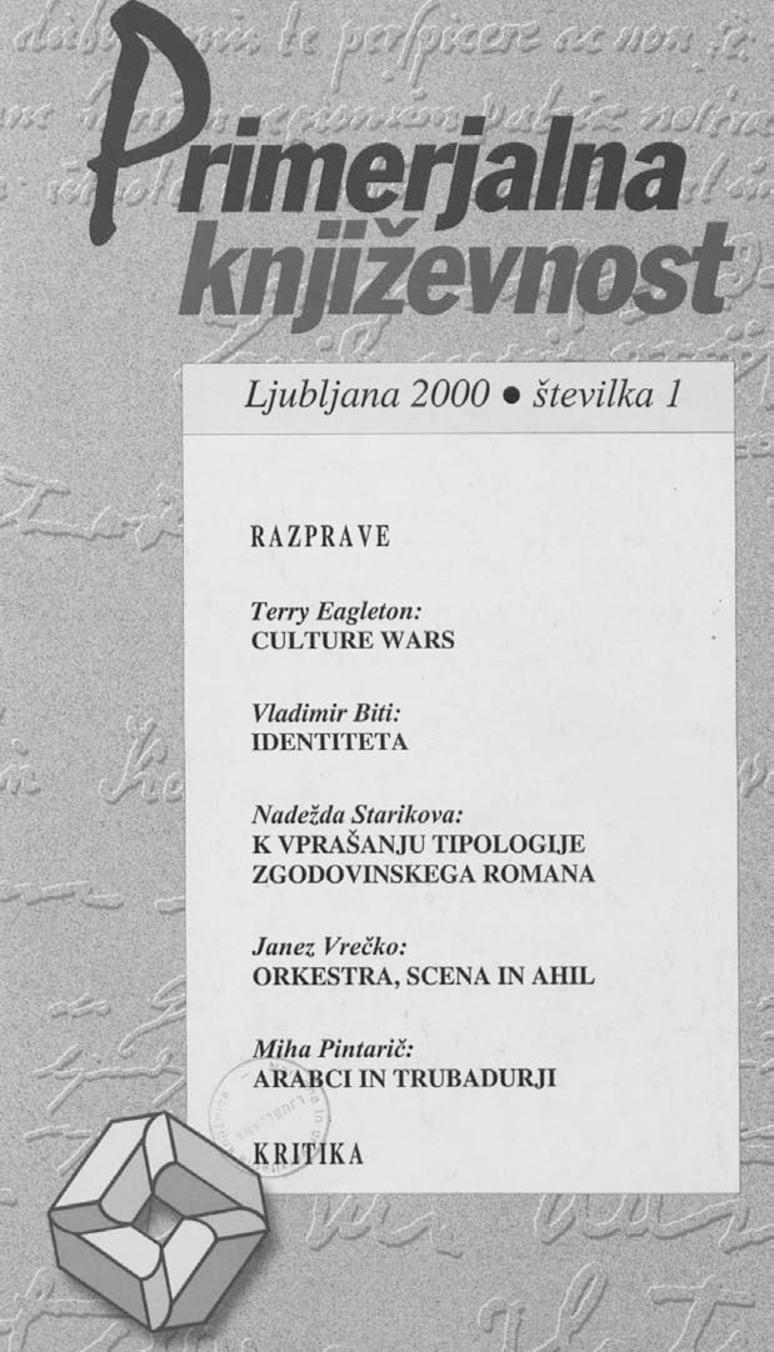The Orchestra, the Scene, and Achilles
Keywords:
literary genres, ancient Greek literature, dramatic structure, dramatic space, scene, orchestraAbstract
Aristotle’s statement that the chorus belongs in the orchestra and the actors belong on stage illustrates an important change in the architecture of the Greek theatre, as the brief, humorous, ritual choral song of Dionysius, performed in the middle of a flat area surrounded by a hill, was extended and its tone became serious. For this, a set, a new place for the actors of the tragedy, was needed in the theatre. There would be no room for an individual who had stepped away from the whole in the circular design of the orchestra, he would need a place outside the link of the circle, in the linear course of the tragic historicism on stage. There, Dionysius becomes a heroic character of a tragically dying winner, to whom resurrection from death will no longer be given. Bringing heroes such as Oedipus, Philoctetes, Ajax and others into the tragedy is, in addition to the dithyramb and the satyr play, the third important element which shaped the image of the tragedy and the architecture of the place where it was performed. – This paper aims to show that it was already Achilles, the epic hero, who transcended the magical line between the orchestra and the scene and thus broke the epic world of totality, which would correspond to Aristotle’s equating Homer and Sophocles. – Had the architectural proto-image of the Greek theatre, which will later be claimed by tragedy, not appeared already in the case of Achilles? Achilles’ anger becomes powerlessness because of his own mortality, an obsession with death; while Homer’s poetry willfully transforms the myth, which needs to be changed if Achilles is to be understood in such a way. Instead of epic heroism, Homer introduced tragic heroism, which is reflected in many references to Achilles, reserved for the dead in heroic times, but used to refer to the front of the tent, where the verb keito, normally reserved for dead warriors, is used; Thetis, supporting her son's head, which presents the living son as dead; or the mention of Achilles’ living, gigantic body (megas megalosti), used to refer to the dead hero in the Odyssey. Homer is only interested in Achilles’ mortality, not in his death; he leaves that to the Odyssey and other epics. The word for anger, menis, used only for the wrath of the gods, is used of a man for the first time in the case of Achilles. Because of it, Achilles separated himself from the territory of the public and collective, and turned to the private as an individual. Homer then shows the values of the epic world, the collective and public, but also the individualized character of Achilles in the private and tragic. So far, the epic world has been understood as exclusively a world of the public, political, total, heroic. But in the Iliad, the private is put forward as well, not only as something marginal, but as the force driving, retarding and accelerating the epic action itself. Achilles creates a private space in the midst of the public, in his tent, on the fringe of the battlefield. Here, he asks himself questions not typical of the enclosed epic world, which is full of meaning. This is especially noticeable in Achilles’ answer to the three messengers, where he accepts death, which levels everybody, and the annihilation of the heroic code; the language he uses is broken, no longer that of an epic poem. Achilles obviously had no language in which he could express his disappointment, so he had to abuse the language available to him. In this, Homer went beyond the epic and entered the territory of the tragic and tragedy. In doing so, he placed Achilles on the edge, the first isolated scene before its placement within an architectural design. There was no place for Achilles on the battlefield, the orchestra. The relationship between the tragic, with a marginalized Achilles, speaking a new language, and the circular battlefield underneath, is thus similar to the relationship between the tragic hero on stage and the chorus in the orchestra of the later tragedy.References
ARISTOTEL: Poetika. Ljubljana, 1982.
BAHTIN, Mihail: Teorija romana. Ljubljana, 1982.
DUKAT, Zdeslav: Sofoklo. Reka, 1981.
FREJDENBERG, Olga Mihajlovna: Mit i antička književnost. Beograd, 1987.
GRIFFIN, J.: Homer on Life and Death. Oxford, 1980.
HERODOT: Zgodbe. Ljubljana, 1955.
JASPERS, Karl: Von der Wahrheit. München, 1947.
LUKÁCS, Georg: Die Theorie des Romans. Neuwied, 1963.
PARRY, A.: »The Language of Achilles.« V: The Language and Background of Homer. Cambridge, New York, 1964.
PLATON: Država. Ljubljana, 1976.
SCHEIN, Seth: The Mortal Hero. Cambridge, 1987.
SOBOLEVSKI, S. I. idr.: Zgodovina grške književnosti (prva knjiga). Epika, lirika in dramatika klasičnega obdobja. Ljubljana, 1966.
ROSENMEYER, Th. G.: »Wahlakt und Entscheidungsprozes in der antiken Tragödie.« V: Poetica, 10/1987, št. 1.
VREČKO, Janez: Ep in tragedija. Maribor, 1994.


